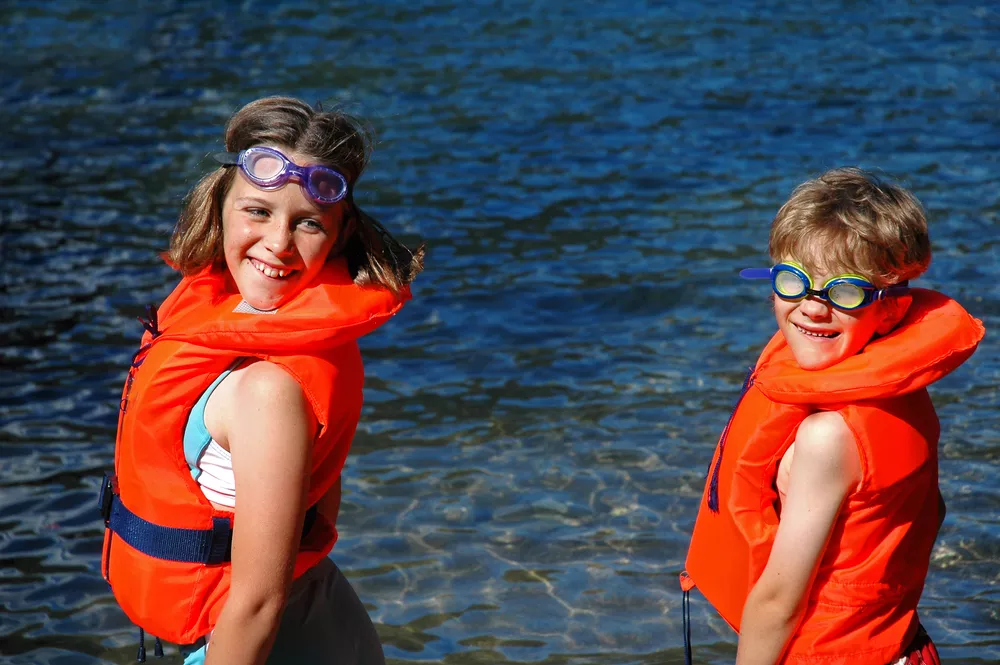Pool and Outdoor Water Safety

From small plastic pools in the backyard to public pools, lakeside beaches, and private farm ponds, where there’s water, there’s likely to be swimming in the summertime – and an increased risk for drowning or other types of water hazards.
“Drowning can happen in seconds,” says Sarah Miller, MD, medical director of pediatric emergency medicine at University of Iowa Stead Family Children’s Hospital. “Infants and toddlers can drown in only a few inches of water, such as in bathtubs or buckets.”
She says children of all ages should wear an appropriately sized life jacket at all times when on boats, docks, or near water, and should always be supervised by an adult. Life jackets may be purchased at the Safety Store.
“Floaties are not a substitute for life jackets, and life jackets are not a substitute for supervision,” Miller says. “Children should have direct supervision at all times – I can’t stress that enough. Pools should have a fence on all sides with a locking gate, but this is also not a substitute for supervision. For young children, an adult with good swimming skills should be within arm’s reach at all times.”
Miller says parents should have CPR training, as well, because CPR done immediately after a drowning can “significantly improve outcomes and survival.”She cautions that drowning isn’t the only hazard swimmers face; diving into shallow water can cause head and neck injuries, and slips and falls in or around swimming areas can lead to cuts or even broken bones.
Drowning is the leading cause of death for children 1-4 years old
Children 1-4 years old are more likely to drown in a pool. Children 5 years and older are more likely to drown in open water.
Before you and your family head out for your next summer swimming adventure, think about these life-saving water safety tips:
Swimming in a pool is a much safer choice than swimming in open water (ponds, lakes, rivers). Swimming pools have defined depths and clear water which makes it easier to notice someone who is struggling to stay above water or has already slipped under. Choosing a pool with a lifeguard is an even safer swimming location as lifeguards have special training and equipment to help rescue a person from the water.
If you are planning to swim in open water, only swim in a designated swimming area where watercraft are not allowed. These areas are inspected for drop-offs and potential hazards. Never dive into ponds, lakes, or rivers as water depth is unknown and you don’t know what lies unseen beneath the surface of the water. Watch for unexpected drop-offs and currents while wading in open water situations. Before swimming in lakes or ponds outdoors, check the water quality at the Iowa Department of Natural Resources website: Beach Monitoring | AQuIA (iowadnr.gov).
Seconds count when it comes to water emergencies:
- Take a cell phone with you when you are watching children during water play.
- Set quick-dial for 911 or your local emergency center on your cell phone.
- Post emergency numbers on all phones. Make sure all caregivers know where to find the emergency phone numbers.
- Keep your conversation brief if you get a call while supervising children.
- Take all toys out of the pool and put them away after your children are done in the pool. Children have drowned while trying to reach toys left in the pool.
Be aware of water danger even after the swim season is over:
- Pools with covers are not safe. Children will try to walk on top of pools during the winter months and may get trapped underneath the pool cover.
- Icy pools, ponds, and streams are attractive play areas for kids.
- Lock your pool gates when the season is over.
Drowning dangers for kids
Keep your child safe by learning more about drownings, fatalities, and hidden hazards of open water.
